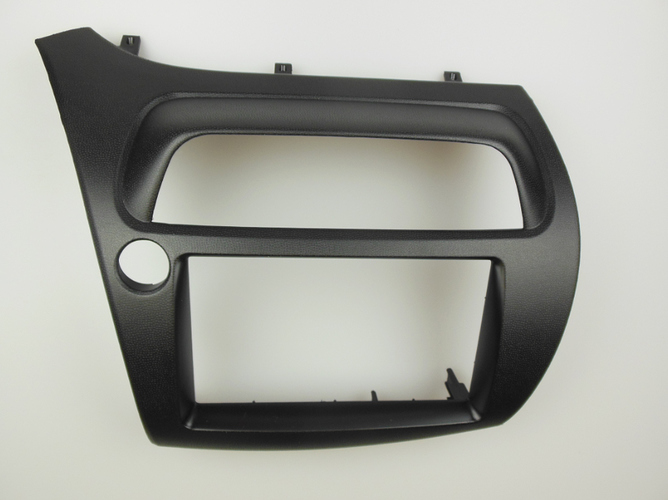I would go for common ABS, although PC/ABS was used in the initial part. First of all because ABS is cheaper and secondly because you will have a hard time finding somone to print PC/ABS as it needs a very high printing temperature, which the least of todays FDM printers can archieve.
Additionally you can use the acetone on ABS to strengthen the part, this will improove the durability in the z plane mostly, but also inbetween all printed lines, so I’d definitely do that. However be carefull when handling acetone, it evapors at room temperature (like alcohole) and it’s highly flammable, any ignition source has to be moved away. You may find acetone vapor smoothing methods, but applying acetone with a paint brush works just as well and nearly as evenly (you have more control over what parts to smooth out and which are fine already). Also the brush method is a lot safer, because you work with liquid (visible) acetone, while the vapor may sneak through any small hole in your container to reach an ignition source.
Since acetone dissolves ABS, you can also brush on some acetone to two surfaces and just press them together, within a few minutes (sometimes even 30 sec) the two parts are chemically welded together, the created bond is usually even stronger then the 3d prints themself.
Painting ABS is very easy, you can use a primer, but usually that’s not necessary, any acrylic based paint sticks very well. I’d recommend to use spray paint as it spreads very evenly and the thin layers stick to ABS very well.
Especially if you don’t use any primer you should clean your ABS prints properly, use plastic cleaners and silicone removing liquids, both can be found in artists stores or hardware stores (basically any shop, that sells paint related stuff). It’s definitely worth the investment, to get a bottle of both cleaners, they last forever and peeling off the paint from your print would be very painfull.
ABS is available in a huge variety of colors, if you are looking for a normal black, you might want to get it precolored.
Using at least (!) two coats of clear spray paint is highly recommended, otherwise scratches etc. may damage the layer of color.
Feel free to ask me, if you have any other questions, btw ABS tends to shrink a bit when 3d printing it, I’ve used a scaling factor of 1,016 which gave me tolerances of less then +/-0,5mm.
The factor might be changed for your specific machine, printer settings and ABS. Color and composition of the ABS can have a huge influence on this factor.
Cheers,
Marius

